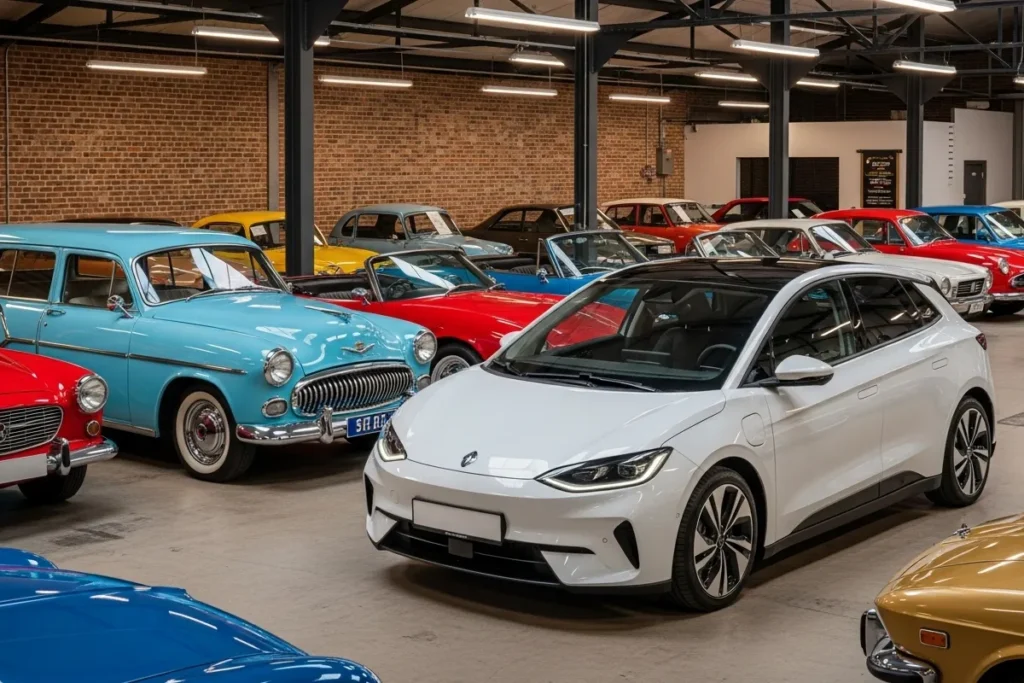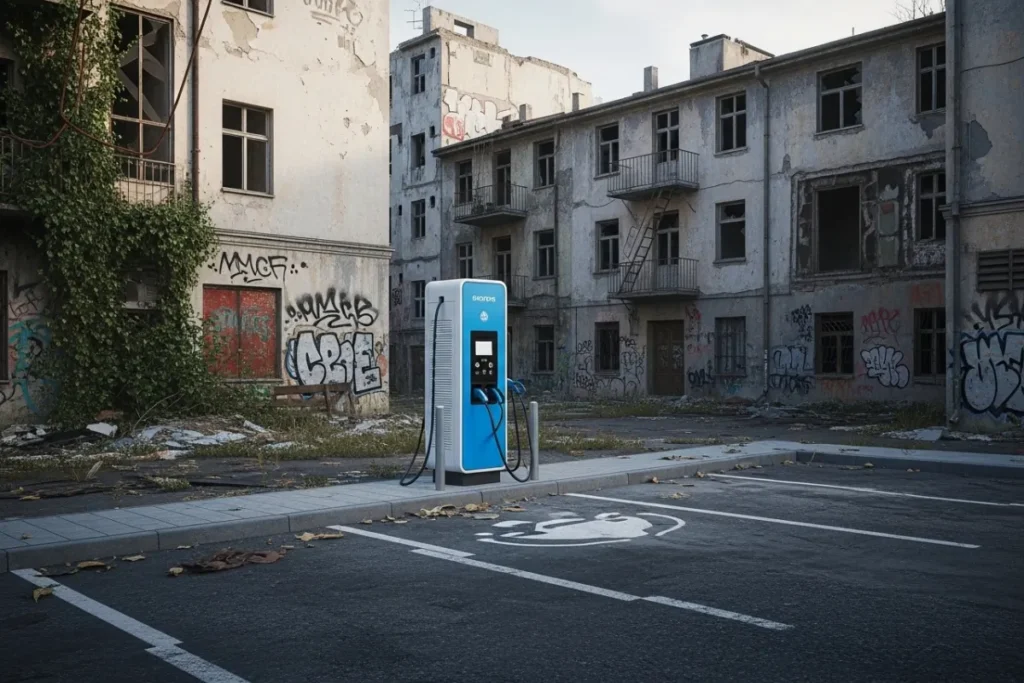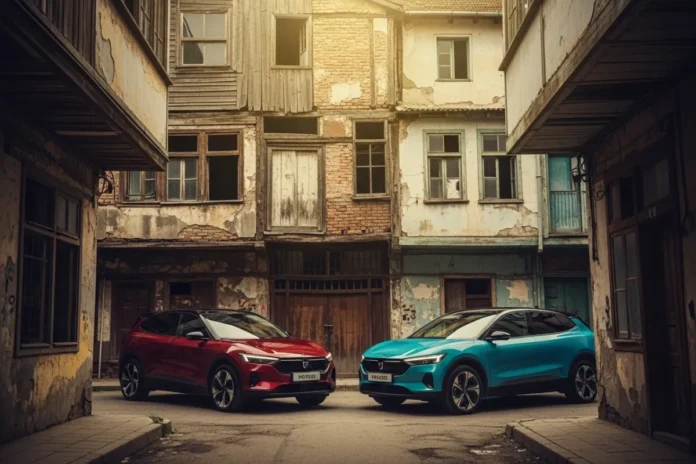This blog post explores the intersection of Electric Cars Affordable and social justice, highlighting the economic challenges faced by low-income families in adopting electric vehicles. As the green revolution accelerates, the barriers to EV ownership can perpetuate inequalities. It discusses the rising popularity of electric vehicles, government incentives, the used EV market, and essential charging infrastructure. The narrative is enriched with real-life experiences, emphasizing the need for equitable solutions to ensure that all demographics can participate in the transition to sustainable transportation. Understanding these dynamics is crucial for fostering electric vehicle social justice.
Table of Contents
Introduction to Electric Cars Affordable and the Green Revolution
The advent of Electric Cars Affordable represents a pivotal moment within the broader narrative of sustainable transportation and the green revolution. As the urgency to address climate change intensifies, electric vehicles (EVs) have emerged as a promising alternative to traditional gas-powered cars, contributing significantly to reducing greenhouse gas emissions. By operating on electricity, these vehicles hold the potential to curtail reliance on fossil fuels and minimize the environmental impact associated with conventional vehicles.
The green transformation encompasses a variety of strategies aimed at addressing the climate crisis, including the adoption of renewable energy sources, energy efficiency measures, and shifts in consumer behavior. Electric vehicles are at the forefront of this movement, seen not only as a means of transportation but also as a critical component in supporting a sustainable future. However, the discourse surrounding electric vehicle adoption often overlooks an essential aspect: affordability—and more specifically, Electric Cars Affordable for low-income individuals and families.
As governments and private sectors invest heavily in the electrification of transportation, it is crucial to examine the implications of electric vehicle social justice and the inequities that arise from the shift towards EVs. While these vehicles offer a cleaner option for transportation, the costs associated with purchasing and maintaining an electric car can create barriers, particularly for low-income communities that may struggle to afford the green transition costs. This evokes questions about the equitable distribution of resources and whether the benefits of electric vehicle adoption are truly accessible to all. Ultimately, understanding the intersection of electric cars affordable and ev inequality will be vital in ensuring that the green transformation does not come at the expense of marginalized populations.
The Rising Popularity of Electric Vehicles
The adoption of electric vehicles (EVs) has surged markedly over the past few years, driven by a multitude of factors that entice consumers and governments alike. Primarily, government incentives have played a pivotal role in promoting electric cars affordable, making these vehicles more accessible to a broader demographic. Subsidies, tax rebates, and rebates for charging station installation encourage the transition to cleaner technologies, appealing to environmentally conscious consumers and those interested in potential long-term savings. These financial incentives, however, often assume a certain level of socio-economic status that may not be feasible for low-income individuals.
Additionally, increased environmental awareness among consumers has contributed significantly to the rise in EV popularity. The public’s growing concern about climate change has led many to perceive electric cars affordable as not just a transportation option but as a responsibility towards sustainability. This perception extends the appeal of EVs as a trendy, eco-friendly choice, reinforcing their desirability across various socioeconomic groups. However, the juxtaposition of this trend against the backdrop of ev inequality highlights a crucial concern: while upper- and middle-class consumers may embrace the green transition, low-income communities often face substantial barriers to ownership due to the high initial costs associated with electric vehicles.
Technological advancements have also contributed to the proliferation of electric vehicles. Improvements in battery technology have resulted in longer ranges and shorter charging times, which enhance the overall feasibility of owning an EV. Additionally, the expanding network of charging infrastructure alleviates some of the range anxiety associated with these vehicles. However, despite these positive developments, the financial aspect of transitioning to electric vehicles remains squarely in the discussion of electric vehicle social justice. If the green transition costs continue to disproportionately affect low-income families, the promise of affordable EVs might remain elusive for the very populations that stand to benefit most from cleaner transportation alternatives.

Economic Challenges of Electric Car Ownership
The transition to electric vehicles (EVs) is often touted as a sustainable solution promoting environmental responsibility. However, the financial barriers associated with electric car ownership pose significant challenges, particularly for low-income individuals. One of the foremost hurdles is the higher initial purchase price of electric cars affordable compared to traditional combustion engine vehicles. Despite the long-term savings on fuel and maintenance, the upfront costs can deter prospective buyers from low-income backgrounds who may already be struggling to afford basic transportation.
Moreover, the costs related to charging infrastructure also play a crucial role in determining electric cars affordable. Many low-income households lack access to private charging stations, making it imperative to rely on public charging infrastructure, which can be both limited and costly. Electric vehicle social justice calls for equitable access to these charging facilities, but currently, the concentration of charging infrastructure in affluent areas exacerbates the ev inequality, further distancing low-income populations from participating in the green transition.
Additionally, the ongoing costs of maintenance and insurance for electric cars affordable can disproportionately affect those with limited financial resources. While electric vehicles typically incur lower maintenance costs due to fewer moving parts, insurance premiums often remain elevated compared to traditional vehicles. Low-income drivers, already strained by transportation expenses, may find this additional burden creates significant barriers to electric car ownership.
In conclusion, while the shift to electric vehicles is essential for a sustainable future, the economic challenges surrounding electric cars affordable must be addressed. Without targeted efforts to alleviate these financial burdens, low-income individuals may continue to be excluded from the benefits of the green transition, perpetuating social and economic inequalities.
Government Incentives and Their Accessibility
The transition to electric vehicles (EVs) is often promoted as a sustainable solution to environmental challenges. Governments across the globe have implemented various incentives like tax credits, rebates, and subsidies to encourage the adoption of electric cars affordable. These programs aim to enhance electric cars affordable, particularly for low-income families, who may benefit significantly from reduced purchase costs. Despite these governmental efforts, the actual accessibility of these incentives often reveals a more complex scenario marked by systemic challenges that influence the equitable distribution of financial assistance.
Many countries offer incentives, such as direct rebates when purchasing, or tax credits that can lessen the burden of up-front costs associated with electric vehicles. These programs are designed to stimulate demand and make electric cars affordable more attainable for consumers. However, the reality remains that low-income communities frequently encounter obstacles that hamper their ability to benefit fully from these incentives. To qualify for certain rebates or tax credits, individuals often must have a specific income level or an established credit history, which can disproportionately disadvantage low-income families. Furthermore, the EV inequality extends beyond immediate purchase prices; it encompasses access to reliable financing options and the socio-economic stability required to consider investing in an electric vehicle.
The systemic barriers faced by these households can hinder the green transition costs intended to benefit all citizens. In many cases, the upfront costs of electric vehicles—even with subsidies—remain prohibitively high for low-income individuals. This discrepancy raises concerns regarding electric vehicle social justice, urging stakeholders to consider equitable solutions that guarantee equal access to incentivized programs. Overall, enhancing awareness of these incentives and reforming the qualification criteria may help bridge the gap, ensuring that all demographics, including low-income households, are included in the transition to electric mobility.

The Used Electric Vehicle Market: A Solution or a Myth?
The used electric vehicle (EV) market presents a potential avenue for addressing electric cars affordable, particularly among low-income populations. As the demand for sustainable transportation alternatives rises, the availability of used electric vehicles becomes crucial in bridging the affordability gap created by the initial high costs of new models. Many low-income consumers are eager to reduce their commuting costs and environmental impact, making the prospect of purchasing a used EV appealing. However, several factors affect the feasibility and attractiveness of this option.
One significant aspect to consider is the availability and condition of used electric vehicles on the market. Typically, used EVs are often sold at a lower price point compared to new models, making them more accessible to those on a tighter budget. However, their market presence can be limited by factors such as initial depreciation rates, which vary significantly across different models and manufacturers. As electric vehicle technology advances and newer models enter the market, older models tend to depreciate more steeply, sometimes leading to a perception that they are less reliable or desirable. This narrative can deter low-income buyers from exploring these options.
Additionally, when examining the long-term ownership costs associated with used electric vehicles, potential buyers must consider aspects such as battery life and replacement costs. If the battery in a used EV requires replacement soon after purchase, it may diminish the financial viability for low-income buyers despite the initial lower price. Furthermore, the absence of a robust support infrastructure like charging stations in socioeconomically challenged areas could amplify the challenges faced by low-income individuals when considering EV options.
In comparing used EVs to their new counterparts, there exists an overarching notion that new models are inherently better in terms of performance and technology. This perception, coupled with concerns about the depreciation of older models, can further propagate EV inequality, deterring low-income consumers from participating in the green transition. Addressing these perceptions and ensuring the availability of affordable, high-quality used electric vehicles is essential for promoting electric vehicle social justice and equity.
Charging Infrastructure and Accessibility Issues
The transition to electric vehicles (EVs) is often framed as a progressive move towards green transportation; however, significant disparities in charging infrastructure persist, particularly affecting low-income communities. The availability and accessibility of charging stations are critical to the overall viability of electric car ownership among economically disadvantaged households. electric cars affordable is not solely determined by the price of the vehicles themselves. It is equally influenced by the convenience of charging access and the associated costs involved.
In affluent neighborhoods, charging stations are often plentiful, positioned strategically in various public spaces, workplaces, and residential areas. This abundance fosters a supportive environment for electric vehicle adoption, making it easier for residents to own and operate EVs. In stark contrast, low-income areas frequently lack sufficient charging infrastructure, presenting a significant barrier to electric vehicle accessibility. Without adequate charging stations, the practicality of owning an electric car diminishes, exacerbating the already existing disparities in EV ownership. As a result, many low-income households face challenges that limit their ability to participate in the green transition.
The correlation between charging infrastructure availability and electric vehicle social justice issues cannot be overlooked. When low-income communities are equipped with fewer charging options, they are disproportionately affected by the higher costs of transitioning to cleaner transportation. Furthermore, these disparities often contribute to ev inequality, hindering the pursuit of environmental equity. Ensuring that charging stations are accessible in all neighborhoods, especially those inhabited by low-income families, is essential for achieving a fair and comprehensive green transition.
Addressing the gaps in charging infrastructure is crucial for promoting electric cars affordable. By investing in the development of charging stations in underserved areas, policymakers can enhance the accessibility of electric vehicles, ultimately supporting a broader demographic in the shift towards sustainable transportation.

Environmental Justice and Equity Concerns
The transition toward electric vehicles (EVs) represents a significant shift in the automotive industry and has considerable implications for environmental justice and equity. While the overarching goal is to reduce greenhouse gas emissions and combat climate change, this green transformation carries potential pitfalls, particularly regarding electric cars affordable for low-income communities. The focus on developing sustainable transportation options must include careful consideration of the unique challenges that marginalized groups face in accessing these technologies.
As cities and governments push for the broader adoption of electric vehicles, they often prioritize infrastructure that neglects low-income neighborhoods. These areas frequently lack adequate charging stations, essential maintenance support, and the financial means to transition from traditional gasoline-powered vehicles to electric ones. Consequently, without intentional policies aimed at supporting electric vehicle access for low-income communities, the rapid shift towards EVs could exacerbate existing inequalities, creating an environment where only affluent populations can reap the benefits of cleaner transportation.
Moreover, the costs associated with the green transition are not distributed equally. Electric vehicle ownership typically demands a higher initial investment, making it challenging for low-income families to participate in this shift toward greener technologies. Even as battery production becomes more efficient and costs decline, the initial affordability of electric cars affordable remains a significant barrier. If this issue remains unaddressed, one of the goals—eliminating carbon emissions from transportation—may end up favoring the wealthy while leaving low-income populations in a cycle of pollution and reliance on potentially outdated technologies.
To ensure an equitable green transition, policymakers and stakeholders must prioritize investments in affordable electric car options and public infrastructure that serve low-income communities. This will help bridge the widening gaps in EV inequality, facilitating access to sustainable transportation and fostering electric vehicle social justice for all citizens, regardless of their economic status.
Case Studies: Real-Life Experiences of Low-Income Families
The discourse surrounding electric cars affordable often overlooks the voices of those directly impacted—low-income families. Real-life experiences shed light on the nuanced challenges and triumphs these families face when considering the transition to electric vehicles (EVs) in the context of financial constraints and social justice.
One pertinent example comes from the Thompson family, who reside in an economically disadvantaged neighborhood. Initially, they were excited about the prospect of switching to an electric vehicle, attracted by government incentives designed to promote adoption. However, they soon discovered that the upfront costs associated with purchasing an EV were still significantly high, even with subsidies. This situation reflects a broader phenomenon of EV inequality, where the initial expense remains a barrier against less affluent populations despite policies aimed at facilitating access. The Thompsons ultimately opted for a used electric vehicle, but the lack of affordable options in their area limited their choices and left them feeling frustrated.
Another case is that of Maria, a single mother of three, who utilized her limited budget to explore possibilities of electric mobility. She shared her experience of relying on public transportation, noting that while she was aware of the environmental benefits of electric cars, she felt the costs of ownership—including insurance, maintenance, and charging—were prohibitive. For Maria, the promise of a green transition came with a caveat: the costs associated with owning an electric vehicle far exceeded her financial capacity. Through her testimony, she articulated a critical aspect of the debate on electric vehicle social justice; the notion that the transition to sustainable transportation must account for affordability and accessibility.
These narratives not only illustrate the diverse realities faced by low-income families but also emphasize the urgent need for targeted policies that address green transition costs. Achieving equity in the electric vehicle market demands comprehensive solutions that recognize the fundamental financial barriers placing electric cars affordable out of reach for many.
| Name / Family | Situation | Challenges Faced | Key Takeaway |
|---|---|---|---|
| Thompson Family | Live in an economically disadvantaged neighborhood; considered switching to an EV. | High upfront EV cost despite government incentives; limited affordable used EV options in their area. | EV subsidies are not enough—upfront costs still exclude many low-income families. |
| Maria (Single Mother) | Single mother of three; explored electric mobility on a tight budget. | Costs of ownership (insurance, maintenance, charging) were unaffordable; reliant on public transportation. | Green mobility is inaccessible without support that addresses full cost of EV ownership. |
The Path Forward: Solutions for Achieving Affordability
The transition to electric vehicles (EVs) has considerable potential to reduce greenhouse gas emissions and advance social equity. However, By reducing the initial purchase price and making EVs more accessible, these measures can bridge the gap that currently exists in the electric car affordability remains a significant barrier in the electric vehicle market., particularly for low-income individuals. To ensure that the benefits of the green transition reach all layers of society, multiple stakeholders — including government entities, the private sector, and community organizations — must collaborate and implement viable solutions.
One fundamental approach is to enhance financial incentives for low-income households looking to purchase electric vehicles. This can include targeted subsidies and tax credits tailored to the financial capabilities of economically disadvantaged groups. By reducing the initial purchase price and making EVs more accessible, these measures can bridge the affordability gap that currently exists in the electric vehicle market. Additionally, innovative financing options such as low-interest loans or pay-as-you-go models can facilitate easier access to EVs for those who otherwise could not afford them.
Moreover, infrastructure investments are critical to bolster electric cars affordable. Expanding charging infrastructure in low-income neighborhoods not only enhances accessibility but also alleviates concerns related to range anxiety. Governments at various levels should prioritize these investments to encourage the adoption of electric vehicles among economically disadvantaged users. Public-private partnerships can play a pivotal role in developing such infrastructure, ensuring broader community access to EV charging stations.
Finally, community organizations can provide education and outreach programs to raise awareness of the benefits and opportunities associated with electric vehicles. By targeting low-income populations, these initiatives can demystify EV technologies and foster a more inclusive environment for the green transition. Addressing electric vehicle social justice comprehensively will ultimately ensure that low-income individuals are not left behind as society moves towards a more sustainable future. Collaborative efforts among stakeholders are necessary to create a united front to tackle the challenges of EV inequality and promote a fairer transition for all.




